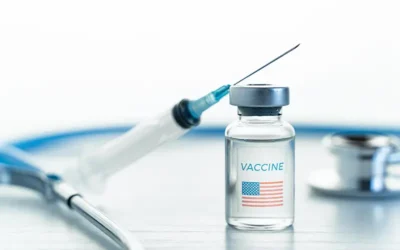Dental surgery is performed to treat various conditions of the teeth, jaws, and gums. Surgical procedures that dentists perform include dental implants, treatment for temporomandibular joint (TMJ) disorder, wisdom teeth removal, facial trauma, corrective jaw surgery, and periodontal surgery to treat gum conditions such as gingivitis or periodontitis. Billing medical insurance for dental surgery that is medically necessary can help patients maximize health insurance benefits. Today, many dental offices are relying on dental billing services to ease this task. In fact, with declining reimbursement rates, practices need to make the most of both the patient’s medical and dental insurance to receive maximum reimbursement for dental surgery. Here are some important things dentists need to know about medical billing for dental surgery:
- Establish medical necessity: Medical insurance plans will reimburse procedures dentists perform, provided they are medical necessary and properly coded as medical procedures. Medically necessary treatment is that provided when the patient is medically compromised by a problem that the dentist treats. For example, medically necessary tooth removal, the removal of impacted teeth, and the removal of teeth before radiation therapy or an organ transplant can be billed to medical insurance. Medical plans also cover soft and hard tissue biopsies and extractions and the surgical placement of dental implants. A Dental Practice Management article points out that for success with medical billing claims, dental practices need use the correct ICD-10codes and CPT codes to document all aspects of the care provided. The documentation should cover:
- The chief presenting problem
- Any secondary, supporting diagnosis
- The diagnostic code for the treatment planned
- Surgical pre-authorization
- A letter of medical necessity outlining the case for surgery
- Supporting letter of medical necessity from the patient’s Primary Care Physician
- The procedures performed at each surgery location
The documentation should inform the payer that the patient’s concern was a medical one and not just a dental problem. For instance, in the case of implants, the documentation should explain two things: the reason for the tooth loss and why the tooth needs to be replaced. All contributing factors from the patient’s medical history can be stated in the Letter of Medical Necessity.
- Obtain preauthorization: All dental surgery claims require pre-authorization from the medical plan and dentists must obtain the authorization before the procedure is performed. Pre-auth involves contacting the insurer by phone and explaining the procedure and the date. Not obtaining pre-auth can result in claim rejection.
- Insurance verification: The patient’s dental eligibility should be verified, that is, collect information on the patient’s coverage and how the insurer will pay for surgery. When a new patient calls to make an appointment, collect the following information:
- Patient’s name and date of birth
- Name of the primary insured
- Social security number of primary insured
- Insurance carrier
- ID number
- Group number
- Contact information for the insurance company including phone number, website and address for submitting claims
With this information in hand, contact the insurer to verify the patient’s eligibility for insurance coverage, effective dates, in-network or out-of-network coverage, whether surgery needs pre-authorization, and co-pays, coinsurance and deductibles. Collecting information on what their insurance will cover will help patients plan for their out-of-pocket payments. Hiring an insurance verification specialist can make these tasks easier.
- Understand coding: Knowledge of ICD-10 codes and their proper use in the Letter of Medical Necessity is crucial to inform the insurer about the need for surgery. According to Dental Practice Management, providers should limit themselves to listing four diagnostic codes in the letter. The first diagnosis listed must relate to the most important procedure performed, followed by those of lesser importance. For instance, if the first ICD-10 code pertains to periodontal disease, the secondary diagnostic codes may pertain to disuse osteoporosis, followed by medical history factors complicating the surgery such as diabetes, HIV or immunoglobulin deficiencies, etc.
The CPT codes on the claim form should be listed from the most expensive down to the least costly in each jaw or surgical site and not in the order they occurred. The reason is that payers reimburse the first surgical procedure listed in each site at the highest benefits level and each subsequent procedure at a lower rate. For instance, while the first procedure on the list may be paid at 100 percent, the second may be paid at 75 percent and additional procedures at 50 (Dental Practice Management).
Filling out and submitting the claim: Once the dental surgery has been performed, the claim should be completed correctly. Forms should be scrutinized carefully as typos and other errors can lead to rejection or delayed payments. When submitting the claim to the insurer, it must be accompanied by the appropriate documentation. Including supporting documentation such as lab or diagnostic imaging reports can help support the claim.
Erinne Kennedy, DMD, a dentist at a community health center in Boston, told Dental Products Report: “The insurance company is looking for specific criteria in your documentation, so if you are able to give them exactly the information they need with the correct verbiage, reimbursement is easier. Accurate and detailed documentation, including radiographs or intraoral pictures, reduces an opportunity for the insurance company to deny the claim.”
Outsourcing is a great option to maximize efficiency in dental billing. Experienced outsourcing companies that offer dental billing services have expert teams that are knowledgeable about insurance companies, their rules, claims submission processes, pricing, coverage, and even the individual plans in each state. Partnering with a reliable medical billing company can ensure proper dental eligibility verification ahead of time and error free dental surgery billing.




